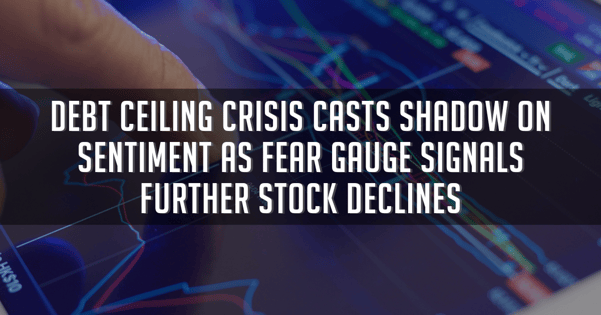Negotiations on the US debt ceiling are set to continue Monday, with federal leaders working towards a resolution as the risk of a potential default looms. President Joe Biden and House Speaker Kevin McCarthy will meet in person at the White House to discuss potential solutions and the urgent need to raise the debt ceiling.
Treasury Secretary Janet Yellen issued a cautionary statement over the weekend, emphasising the need for difficult decisions if the debt ceiling is not raised in time. Among the consequences would be determining which bills go unpaid, highlighting the pressing nature of the situation and the potential for the United States to default on its debt as early as June 1.
Reflecting on the 2011 debt-ceiling crisis, the potential impacts of a default becoming evident. During that crisis, the S&P 500 experienced a decline of over 15% from July to August, ultimately resulting in a credit rating downgrade by S&P. Unfortunately, the current economic backdrop is even more challenging. Unlike in 2011, the Federal Reserve is currently navigating persistent inflation and tighter policies from central banks, posing a greater threat to the economy.
It is crucial to recognise that market performance has been heavily influenced by expectations of monetary policy. However, investors should exercise caution when basing stock investments on the assumption that a financial crisis will lead to lower interest rates. While short-term gains may appear promising, their sustainability, in the long run, is uncertain.
Investor sentiment suggests an expectation of at least one interest rate cut by the Federal Reserve this year, despite indications of a more restrictive stance by Fed officials. However, a decision to lower interest rates may only materialise under adverse macroeconomic conditions.
In the near term, investors are closely monitoring progress in the debt-ceiling negotiations and analysing minutes from the Fed's May meeting for insights into the future direction of interest rates.
Alarming signals from the options market have emerged alongside the current stock market rally. Traders have increasingly used call options to speculate on a rise in the VIX (fear gauge) at the fastest pace since March 2020, according to data from Cboe. This trend began earlier this year with concerns over regional bank distress and has persisted, despite some easing of those concerns.
Investors have started to exercise caution, withdrawing nearly $24 billion from US equity funds during the first three weeks of May, as apprehensions surrounding the debt-ceiling deadline heighten fears of another episode of stock market volatility.
Individuals who initially invested in high-yielding Treasuries and money-market funds are concerned about the potential impact of a default on their investments. Consequently, some have sought refuge in government debt, favouring longer-dated counterparts over short-term Treasuries to mitigate near-term disturbances.
Fullerton Markets Research Team
Your Committed Trading Partner














